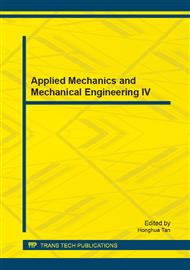p.413
p.418
p.424
p.428
p.432
p.440
p.449
p.455
p.462
Lubrication in Push-Through Bending on Bending of Aluminum Extrusion Section
Abstract:
The push-through bending process can be regarded as a bending mechanism with two fixed diepoints and two movable diepoints, resulting in a total of four points. It can also be regarded as acontinuous four-points bending. As compared to other bending processes, there is severe friction at the contact area betweenthematerial and die in push-through bending. In this paper, we clarify different aspects of lubrication and research excellent lubrication oil in push-through bending. Based on theresultsobtained, it was found that adhesion occursdepending on the lubricant used and the occurring force. It was also confirmed, that olefin is effective as a remedy for oiliness, in case of using a mineral oil-based lubricant. In addition, it was confirmed that excellent lubrication oil could be obtained by increasing the alcohol content and adjusting the content of synthetic ester. This is a good alternative to the more expensive olefin.
Info:
Periodical:
Pages:
432-439
Citation:
Online since:
October 2013
Authors:
Price:
Сopyright:
© 2014 Trans Tech Publications Ltd. All Rights Reserved
Share:
Citation:


